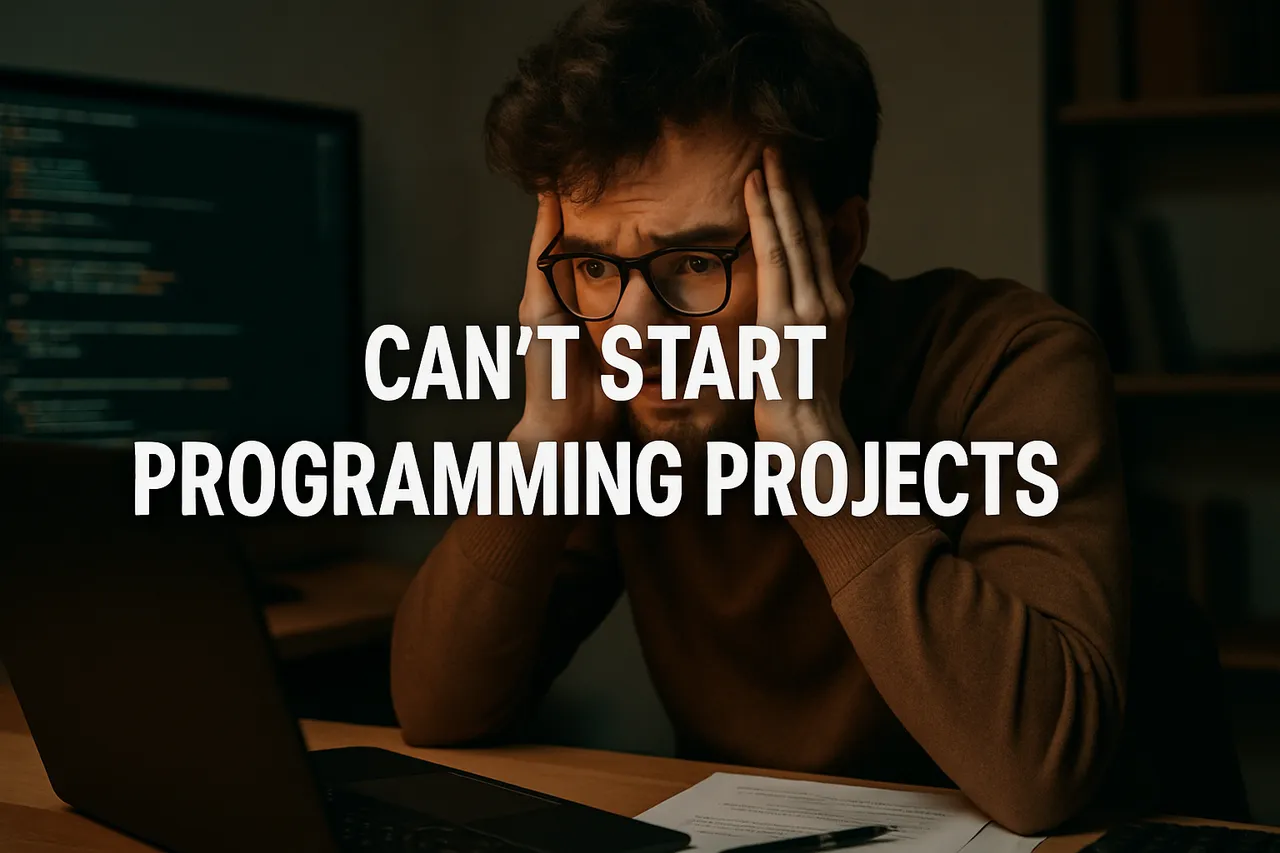
You want to begin a programming project? Good on you.
Perhaps you have no idea how to begin. That's fine—you're not alone. Actually, a lot of individuals have this same question: How do I start a project when I don't even know where to begin?
Let’s break it down. You might be struggling for one (or more) of these reasons:
- You’re overthinking the project.
- You don’t know how to plan or execute.
- You’re still learning how to program.
- You don’t have a project idea.
- You’re stuck in tutorial hell and don’t feel confident.
And guess what? That’s normal.
I used to be right where you're sitting now. I didn't start anything when I first began. These days? I don't complete them. That's growth.
The Most Difficult Thing Is the Starting
It takes so much energy to begin with when you are first getting going. Once a project has gotten going, it becomes really manageable. Take that as similar to jumping in freezing water: hardest thing to do is make the jump.
So how do we make that leap simpler?
Step 1: Begin With the Idea
You can't begin a project without an idea.
Here's some good news: project ideas are all around. They can be small-such as fixing a little problem you encounter every day; or grand- such as creating a tool that assists others. But let's get real: you shouldn't be looking to do something enormous if you're still searching on Google how for loops work.
Instead, ask yourself: What's your goal with this project?
- Do you want to become a better coder?
- Are you attempting to pad your resume?
- Are you looking to create a side business or side hustle?
Understanding your goal will assist you in choosing a project that fits.
Also, consider your passions:
- Do you enjoy creating games?
- Are you interested in AI?
- What types of websites or apps do you like to use?
When you care about what you're creating, you're more likely to complete it.
Resume Project Tip:
If you're trying to get hired, look at job postings. Look for shared technologies that show up frequently. Apply those technologies to your project. If employers need React and Node.js, don't do a Django project and be done with it. Match your tools to what the industry demands.
Step 2: Still No Idea? Steal (In a Good Way)
Alright, not steal. Let's say "take inspiration."
Your project does not have to be unique. The point of a beginner project is to practice coding, not change the world.
Create typical beginner projects:
- A calculator
- A blog
- A to-do list
Yes, they're formulaic—but they'll teach you the basics: logic, structure, user input, and problem-solving. And here's the best part—you can always add a twist to them.
Suppose you're creating a to-do app. Dull? Possibly. But what if it had a twist?
- What if it was an AI-driven to-do app?
- What if it was an app specifically for developers?
Now it's more interesting and more impressive.
Recruiters are exposed to the same generic projects over and over. Adding a twist makes your project different.
Step 3: Be Lazy (The Smart Way)
Lazy does not equal careless. Lazy equals efficient.
When I tell you to "be lazy," I mean work smarter, not harder. Here's how:
Divide the project into tiny, bite-sized tasks.
- This is the old "divide and conquer" trick.
If you're making a to-do app, ask yourself: what do I know?
- Perhaps you know JavaScript and some Next.js.
- Great. Look at the Next.js docs. Locate the "Get Started" guide.
Step 2: Use templates or boilerplates.
- But isn't that cheating? No. Templates are there to save time.
- If you're new, don't use a boilerplate until you get it.
- But if you're familiar with the basics and your aim is productivity or creating a portfolio? Use the template. You won't win an award for reimplementing
create-react-appfrom scratch.
Step 4: Build an MVP
An MVP is a Minimum Viable Product. It's the bare minimum of your project that still functions.
No bells and whistles. No frills. Just the essentials.
Want to create a blog?
- MVP: a form to publish content, a list to show it.
- Not MVP: dark mode, animations, a commenting system, user accounts, etc.
Once your MVP is complete, you can begin refining it. But don't add any more until that foundation is complete.
Step 5: Take Breaks
Take breaks, please.
Go outside. Touch grass. Breathe.
Short breaks reset your brain. You'll return to your project with better clarity and energy.
Final Thoughts
It doesn't have to be intimidating to begin a programming project. You simply need:
- A clear objective
- A reasonable idea
- A few clever tips to keep you on the move
And above all: patience.
So go create something. It doesn't have to be perfect. It just has to be yours.
And hey, if it fails? That's still progress.
Happy coding.